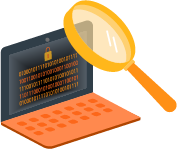Artificial intelligence (AI) is becoming indispensable to organizations. We’ve seen the best of AI capabilities unlocked across the most diverse range of projects, from healthcare diagnostics to the development of autonomous vehicles. In the workplace, generative AI or GenAI tools like ChatGPT are being adopted at unprecedented rates. Overall, this is good news because AI systems and technologies provide unparalleled advantages to companies. But en route to unlocking these benefits, businesses need to ward off some dangerous AI security threats.
In this article, we’ll zero in on one of the most harmful and prevalent types of attacks that target AI systems: AI model poisoning. In addition to giving you the lowdown on AI model poisoning, we’ll also provide some actionable recommendations on how you can mitigate such cyberattacks, safeguard your machine learning models, and harness the true power of AI advancements.
What is AI Model Poisoning?
Fundamentally, an AI model poisoning attack is when an adversary injects malicious data into whatever training datasets you use to build or run your ML models. ML models can only do what their datasets teach them, so tinkering with datasets during their training phase allows malicious actors to manipulate their outputs. AI model poisoning attacks are the digital equivalent of throwing a spanner in the works.
What makes AI model poisoning especially dangerous is that it doesn’t focus on obvious targets like infrastructure. Instead, it targets foundational data sources, which form the supply chain of your ML models. Therefore, it’s a more invisible danger than most attacks, because there’s no obvious way for companies to know if a threat actor has manipulated open-source or third-party datasets that they use for their ML models.
Types of AI Model Poisoning Attacks
AI model poisoning generally falls into two categories, each with very different objectives and consequences.
Targeted Attacks
In these attacks, threat actors introduce triggers via specific data points so that the ML model will only misbehave under certain conditions or if given specific prompts. That way, for the most part, the ML model will operate as it should, making it difficult to identify when its outputs are malicious. Where could this kind of attack have an actual impact? Think of a scenario where an adversary poisons the AI model of an autonomous vehicle to misread stop signs or traffic lights. The effects of such AI model poisoning attacks could be disastrous.
Non-Targeted Attacks
In these attacks, adversaries don’t target any specific aspect of an ML model. Instead, they aim to corrupt the entire model. They typically do this by injecting a large volume of malicious data into training datasets. The effects of doing so typically include degradation of overall performance and high volumes of incorrect or unusable outputs.
What are the Consequences of AI Model Poisoning?
Now that we’re on the same page about what AI model poisoning attacks are, let’s understand their real-world implications and how they might affect businesses. Here’s what can commonly result from AI model poisoning.
Poor Model Performance
AI model poisoning will almost always detrimentally affect the model’s behavior. Businesses often experience reduced accuracy and a high volume of errors after model poisoning attacks.
Reduced Security Robustness
When the training data of ML models is manipulated or corrupted, the models themselves will have more security vulnerabilities. They will be less equipped to deal with other kinds of cybersecurity threats and attacks.
Misinformation and Biases
For GenAI use cases that leverage large language models (LLMs), model poisoning attacks can cause the model to generate biased or inaccurate content. Depending on the context, AI-generated misinformation and biased outputs can lead to reputational ruin and even legal trouble.
Misclassification
In certain kinds of AI model poisoning attacks, threat actors can cause ML models to misclassify inputs. In use cases like medical diagnostics, even the smallest instance of misclassification can have disastrous effects.
How Do AI Model Poisoning Attacks Work?
When businesses develop or build upon AI models, they rely on tremendous amounts of training datasets. This training data comes from a wide variety of sources, including:
- Proprietary enterprise data
- The internet
- Log data from smart devices
- Government databases
- Open-source repositories
- User inputs
An AI model can only perform as well as the datasets it’s trained on. AI models often ingest high volumes of training data, very quickly and in real time. This means that vulnerabilities and malicious subsets can sneak through unnoticed.
In some cases, threat actors directly manipulate open-source training datasets. When sensor data is used, adversaries can potentially tamper with that as well. Another way to conduct AI data poisoning attacks is via federated learning, a model where multiple entities or contributors work together to train an ML model. If a rogue participant enters that circle, a model’s training data can easily be tampered with.
During the training phase, machine learning algorithms may unknowingly analyze and learn from poisoned datasets, which will completely reorient their logic and performance.
After the training phase is complete, businesses will deploy their AI model into whatever use case or scenario they planned for. However, since the training data has been poisoned, the AI model will not function as planned. If it’s a non-targeted attack, there’ll likely be a general performance lull. If it’s a targeted attack, certain prompts may trigger malicious outputs.
As we mentioned earlier, AI model poisoning is tricky to deal with because it doesn’t cause the entire AI model to collapse. Instead, the indicators of compromise are far more subtle, typically seen in the form of performance drops or occasional instances of suspicious behavior.
What kinds of AI model poisoning attacks should you know about?
While all AI model poisoning attacks feature some degree of data manipulation, techniques and objectives may differ. Let’s take a look at a few different kinds of AI model poisoning attacks.
Label Flipping Attacks
In these attacks, threat actors change and reassign the labels in a training dataset. Messing with the labels of AI data used for training will confuse the AI model and alter its decision-making.
Clean Label Attacks
In these attacks, adversaries make the smallest and subtlest changes to the labels of training data. Compared to label flipping, clean label attacks operate more covertly. That’s because the labels aren’t “wrong” or in the wrong place; they’re just designed to subtly alter how the AI model works.
Availability Attacks
Most AI model poisoning attacks focus on tricking the AI model into generating malicious outputs. Others, like availability attacks, simply focus on ruining the performance of the AI model until a business has to take it offline. In a world where downtime and disruptions aren’t tolerated, availability attacks hit companies where it hurts.
Backdoor Attacks
In backdoor attacks, threat actors slip in secret triggers into an AI model’s training data. Only certain inputs will trigger the AI model to activate the adversarial attack. A commonly seen technique in backdoor attacks is introducing a secret pixel pattern to alter the machine learning model’s behavior.
Data Injection Attacks
In these attacks, malicious actors add biased or inaccurate subsets into a model’s training data. Therefore, once it’s deployed, its outputs may subtly exhibit discriminatory biases or be confidently inaccurate. The issue with data injection attacks is that there’s no way to get to the root cause of why an AI model might make these strange decisions.
Data Manipulation Attacks
Unlike data injection attacks, where threat actors introduce entire subsets of bad data, data manipulation techniques involve subtly tweaking the existing training data. The end result is the same: inaccurate, biased, and poor decision-making.
Best Practices to Mitigate AI Model Poisoning
Almost every business, from major enterprises to small and medium-sized companies, is looking at AI technologies to boost productivity, performance, and innovation. That means everyone needs to look out for AI model poisoning attacks. Here are some actionable recommendations to keep your company safe from AI model poisoning.
Employ Data Validation and Sanitization Techniques
Once an AI model poisoning attack takes place, it’s very difficult to go back and fix poisoned datasets. Therefore, it’s crucial to address AI model poisoning risks as early as possible. Enterprises should select top data validation, auditing, and sanitization tools to scan raw data before adding it to training datasets.
Use AI-Powered Anomaly Detection Tools
AI model poisoning attacks can escalate quickly and under the radar if businesses aren’t careful. That’s why it’s so important to use AI-powered detection and response tools to keep an eye on a model’s outputs and raise an alarm when there are deviations from the baseline. Anomalous behaviors include inaccurate outputs and inconsistent functionality.
Implement Robust Access Controls
A simple way to reduce the risk of AI model poisoning is by controlling who has access to the training data. The fewer people who have access, the smaller the risk of AI model poisoning. Role-based access controls are always a good idea, along with multi-factor authentication and other zero-trust concepts like least privilege and just-in-time access.
Leverage Adversarial Training
Adversarial training is a defensive technique that involves teaching your AI model how to recognize malicious training data. The way to do this is to introduce adversarial datasets during the training phase (before deployment) to teach the model why certain datasets are dangerous and how to sidestep their risks.
Ensure Continuous Monitoring
Securing AI models from poisoning attacks isn’t a one-time effort. Monitoring must be continuous because, as we’ve highlighted in this article, certain AI model poisoning attacks activate only when triggered. Therefore, companies have to constantly keep an eye on how their AI models are performing and identify issues before they turn into disasters.
Train Users and Employees
No matter how good your defense strategy is, your AI security is ultimately in the hands of your employees and teams. That’s why it’s vital to educate them about the dangers of AI model poisoning and how to identify indicators of compromise. If your employees are well-trained, they’ll be able to spot even the subtlest signs of poisoned AI data.
Conclusion
While AI models can help businesses edge past competitors and improve performance, there’s always the risk of AI model poisoning. Considering how important AI is to businesses, malicious and inaccurate AI outputs can be a major issue, leading to reputational damage and a loss of customers. Businesses may also face severe legal repercussions.
To evade both targeted and non-targeted AI model poisoning attacks, companies need to use techniques like data validation and sanitization, leverage anomaly detection tools, and tighten access controls. They must also ensure continuous monitoring of AI models, leverage adversarial training techniques, and train their teams to spot signs of AI model poisoning across the AI lifecycle.
If you feel you need some external support to deal with AI risks like model poisoning, consider working with a managed security services provider to secure your AI ecosystem.
Categories: Security, Managed Security Services, Cybersecurity Strategy, Cybersecurity Best Practices, Adversarial Attacks, AI Model Poisoning, Model Poisoning, GenAI Security, Zero Trust AI, Enterprise AI Risks, AI Security, Machine Learning Risks, Data Integrity, Data Poisoning Attacks











